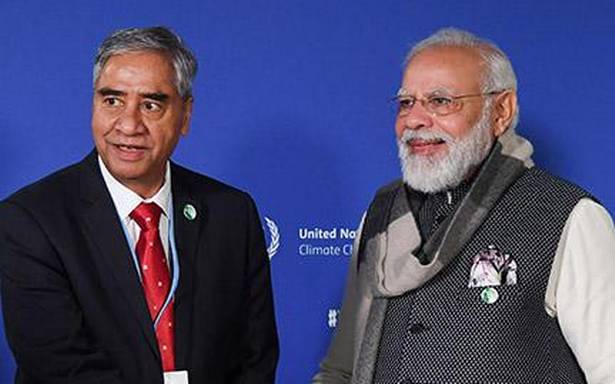The Energy Exchange under India’s Power Ministry on Monday granted permission to Nepal after persistent lobbying from Kathmandu, as Nepal Electricity Authority (NEA) is now in a position to sell its surplus energy, according to a report in The Kathmandu Post.
For the first time, Nepal will sell its surplus electricity to India at a competitive rate after New Delhi allowed the neighbouring country to trade its power in the Indian power exchange market, according to media reports on Wednesday.
The Energy Exchange under India’s Power Ministry on Monday granted permission to Nepal after persistent lobbying from Kathmandu, as Nepal Electricity Authority (NEA) is now in a position to sell its surplus energy, according to a report in The Kathmandu Post.
In the first phase, 39MW power, including 24MW produced by NEA-owned Trishuli hydropower and 15MW Devighat power house, has been permitted for trading in Indian Energy Exchange (IEX). Both projects were developed with India’s assistance.
“Following the Indian approval for Nepal to export its electricity, power trade between the two countries has entered a new phase,” the report cited Nepal’s ministry of Energy, Water Resources and Irrigation as saying.
Gokarna Raj Pantha, joint spokesperson for the ministry, told the Post that the Nepal Electricity Authority would now be able to participate in an auction in the Indian Energy Exchange everyday to sell power.
“The NEA will start exporting the power through 400- kV Dhalkebar-Muzaffarpur inter-country transmission line from midnight,” The Himalayan Times reported.
This transmission has until now been used just to import power as Nepal had already received permission for purchasing and importing power in the Indian Energy Exchange.
“The NEA has been importing power through Indian Energy Exchange at competitive rate since last April 30 as per need. After obtaining the approval, the power trade between Nepal and India has entered a new phase,” the report said.
“According to Madhu Bhetuwal, spokesperson for the Energy Ministry, the Indian authority has also been studying Nepal’s proposal to sell the electricity generated by two other power projects, including the 456MW Upper Tamakoshi Hydropower Project,” The Kathmandu Post reported.
“Nepal became an energy surplus country ever since the 456MW Upper Tamakoshi Hydropower Project came into full operation in August,” the report said.
According to the NEA, Nepal now has surplus power even during peak hours, usually between 7 and 8 pm. The peak hour demand stands at 1,500MW.
“The country is currently producing 2,000MW of electricity, of which 1,900MW is generated from hydropower projects,” it said.
Speaking about the development, Rohit Bajaj, Head and Senior Vice President, Business Development, Indian Energy Exchange Limited, said that IEX commenced trade in cross-border electricity transactions in April. Under the CERC Regulations, grid connected neighbouring countries can buy-sell electricity though the day-ahead electricity market on the Exchange.
“Nepal was the first country which commenced transactions at IEX platform and has been buying electricity regularly in the day-ahead market,” Bajaj said.
“As yet another key milestone in strengthening cross border ties, two hydro generators from Nepal, Trishuli and Devighat Hydro have sold electricity to India through Exchange platform for the first time,” he said.
“We are also working closely with stakeholders in Bhutan and Bangladesh and going forward expect these two countries also to commence trade at IEX platform.”
“The Exchange day-ahead market opens for trade from 10 AM to 12 PM on a daily basis. The market follows double sided closed anonymous auction to discover most competitive power price for the electricity to be delivered on the next day,” he said.
Source: Read Full Article

